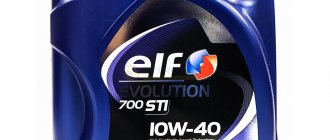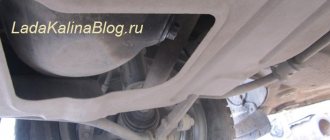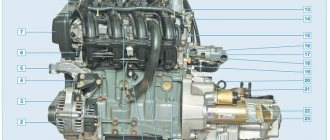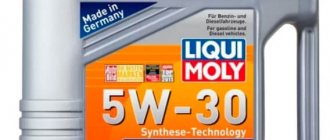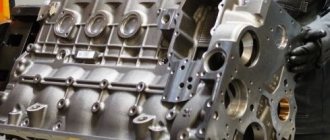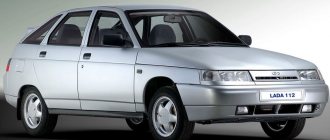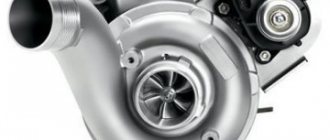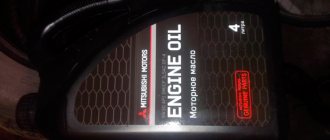Many Russian motorists complain that the engines of domestic cars consume a lot of lubricant. Today, Russian-made cars manufactured at AvtoVAZ are equipped with 16-valve engines of modifications 21126, 21127 and 21128. The designers of these power units officially claim that the first two 1.6-liter models should consume no more than 50 grams of lubricant per 1 thousand kilometers. . But the oil consumption of the Priora, equipped with the domestic engine 21128, is expected to be 6 times more, that is, up to 300 grams for the same distance. What is the reason for such great gluttony? Does this indicator depend on what kind of engine oil is used for the Priora?
Features of the motor brand 21128
This power unit is installed not only in Priora. They are also supplied to other brands of VAZ cars. Wanting to reduce the cost of production, the authors of the modernization of the 21127 engine decided to leave the cylinder-piston block unchanged. The solution was simple - increase the volume by increasing the piston stroke. To implement it, the connecting rod and crank mechanism was changed. Shortened connecting rods allow the pistons to increase their stroke.
Despite the manufacturer’s assurances that the engine’s service life is 200 thousand km, in practice it turned out to be much less. This is explained by the fact that the parts of the cylinder-piston block began to experience much greater loads. The engine itself is a 4-cylinder, injection. The timing camshafts are located at the top, the gas distribution mechanism drive is a belt drive. But if it breaks, the valve cylinders do not bend. But wear of the rings and cylinder walls progresses quite quickly. As a result, the engine becomes so “hungry” that it consumes oil for the Priora from 0.7 to 3 liters per 1 thousand km. Thus, without major repairs, it cannot travel even one hundred thousand kilometers.
Other reasons for excess grease consumption
In addition to the above-mentioned shortcomings due to the fault of the manufacturer, there are a number of other reasons why synthetics or semi-synthetics poured into the engine are overused. This applies to all engine models, regardless of manufacturer.
- A non-recommended oil has been poured into the engine, and another oil, for example, with a low viscosity, or counterfeit.
- The oil seals in the engine are worn out, the piston rings are coked or worn out. Other reasons are possible - such as leaking crankshaft seals, breakdown of gaskets.
- An overly aggressive driving style, accompanied by fast accelerations, maximum revs and engine temperature conditions.
- The power unit has undergone a major overhaul, the rings and cylinder walls have not yet gotten used to it.
If a lot of oil fluid is burned, you can see bluish exhaust gas coming from the exhaust pipe. Over time, an oily black film can be found on its edges. But it is impossible to determine the reason why this happens without opening the engine.
Choice
Which is better: synthetic or semi-synthetic? This is an eternal dispute that will never be resolved. Car owners who pour synthetic lubricants into their Prioras claim that the engine runs much smoother and easier, and that oil won’t spoil the porridge.
Other “priorists” - adherents of semi-synthetics, insist that synthetic oils, due to their properties, are not suitable for their cars, since it often happens that the lubricant “leaks” through oil seals that are not suitable for it.
In fact, the oil has nothing to do with it. Lubricant leakage through the seals can occur for completely different reasons, for example, due to a manufacturing defect or increased pressure in the system.
As for the plant's recommendations, they clearly prescribe the use of semi-synthetic oils for gasoline engines corresponding to groups SJ or SL , provided for by the API classification. "Priors" leave the assembly line with semi-synthetic production oil poured into the engine.
Violation of the manufacturer's recommendations for a car that is under warranty and undergoing mandatory maintenance may result in termination of warranty service by the company that sold you the car. If your Priora is not under warranty, you can safely use synthetics, the main thing is that it is of high quality.
Oil viscosity
The viscosity of engine oil is selected for certain temperature conditions of its operation. If you plan to use oil seasonally, and, for example, fill it with winter oil, then you should focus on the minimum design temperature.
In other words, if the machine will be operated at a temperature of minus 35-40 degrees, the oil viscosity class according to SAE must correspond to 0W or 5 W. If the design temperature is minus 25 degrees, a lubricant of class 10 W should be filled in, if minus 20 degrees - 15 W, minus 15 degrees – 20W, etc.
For summer oils, the classification method is retained. The numbers on its marking also indicate the viscosity in ascending order. For example, SAE 20, 30, 40, 50, 60.
If you want to use all-season oil, then lubricants of the following specifications are recommended for Priora, depending on the temperature conditions:
- 20W40: from -15 to +45;
- 15W40: from -20 to +45;
- 10W40: -25 to +35;
- 10W30: -25 to +25;
- 5W40: from -30 to +35;
- 5W30: from -30 to +25;
- 0W40: -35 to +30;
- 0W30: -35 to +25.
Manufacturers
When buying motor oil, you should also pay enough attention to its manufacturer. Considering the presence of a significant number of counterfeits on the lubricants market, it is better to buy oil in specialized stores, where the seller will easily provide you with a quality certificate for any product sold.
And yet, an expensive product is not always the best quality. There is no need to buy the most expensive oil, the advertising of which we see on TV or hear on the radio. It is enough that the manufacturer has been known on the market for several years, and during this time has not proven itself poorly. As for recommendations, he recommends the products of the following companies:
Read also: Zyb 1825r 817 4
Recommended oil characteristics
Priora is equipped with several engines: 8 and 16-valve with a volume of 1.6 liters, as well as the above-described 1.8-liter with 16 valves. They all have different power - from 81 to 120 horses. In order to choose the right lubricant for them, it must meet certain characteristics. The lubricant must be synthetic or semi-synthetic. So what kind of oil should I use? Lada Priora uses engine oil corresponding to classes SJ, SL - according to the American API specification. Such lubricants have been used for gasoline engines since 1996. Which oil is better to fill - SJ or SL?
Lubricants of level SL and higher are required to be used in 16-valve engine models. They are designed for both conventional and multi-valve engines, including turbocharged ones. These oil compositions have low volatility and extended drain intervals. Good cleaning qualities allow you to promptly remove carbon deposits, soot, and other harmful deposits from the engine. SL class motor oils can be recommended for all Priora power units.
Another important characteristic is viscosity, defined by the SAE standard. As a rule, all-season motor fluids that have a certain level of low-temperature and high-temperature viscosity are poured. For example, in the 5W30 indicator, the number 5 means that the pumpability of the lubricant, as well as the engine crankability, will allow a cold engine to be started normally at sub-zero temperatures, down to -30°C. The number 30 after the letter W determines the kinematic and dynamic viscosity of the lubricating mixture in a warm, running engine. It is usually measured in laboratory conditions, the oil composition is heated to temperatures of +40°C, as well as +100°C. Although the cylinder-piston group heats up even to +250°C, engine oil also works there, reducing the friction of the piston rings on the cylinder walls.
The higher the level of high-temperature viscosity, the less fluidity the lubricant will have. At the same time, the oil film on the surfaces of parts is stronger and more stable. For Priora engines, the recommended level is 30 or 40. Synthetic lubricant with viscosity 30 (for example, 5W30) is best used in unworn engines, when the gaps between the surfaces of the parts are still small. Over time, you will have to switch to a thicker, semi-synthetic composition, which has a viscosity characteristics of 40.
Low-temperature ductility is determined by the first digit in the designation. For areas with harsh winter climates, it is recommended to take 0W30 - the engine will start even at a temperature of -35°C. For moderate latitudes, 5W30 or 5W40 is quite suitable. For cars operating in the south of the country, we can recommend 10W40 - the maximum cold start temperature will be -20°C. This lubricating composition does not lose its viscosity in hot climates.
Does each engine have its own oil?
If the engine oil is not selected correctly, it will begin to be squeezed out through the breathers
By and large, all modern VAZ cars that come off the assembly line today are equipped with the same type of engine, if not a modification of one base engine. In the case of the Priora, the plant at different times installed and is installing several engines on this model:
- old 8-valve 1.6-liter 87-horsepower VAZ 21116 engine;
- 16-valve 98-horsepower 1.6-liter VAZ 21126 engine;
- forced 106-horsepower 16-valve 1600 cc engine VAZ 21127;
- 1.8-liter 98-horsepower 16-valve engine 21128.
If you don’t take into account the eight-valve engine, then all the others are absolutely identical in design and in terms of the volume of oil poured - a stable 3.5 liters. Even in terms of technical characteristics, the engines differ very slightly, so there is no need to talk about a radical difference in lubrication. The manufacturer agrees with us.
What kind of oil to pour into Priora, what does AvtoVAZ say?
What oil does AvtoVAZ recommend?
By and large, it does not matter what kind of oil is poured into the Priora engine from the factory.
Simply because it changes immediately after running in, which is about two thousand kilometers. Many people change the oil right away. Some oil manufacturers, for example, Lukoil, claim that in every new Priora, their 10w-30 mineral running oil splashes in the crankcase, TNK claims that their semi-synthetics are poured into Prioras, and a list of brands and types of oils recommended by the plant is given in the manual operation. On four pages.
In short, the plant is responsible only for the break-in period and does not particularly advertise the brand and manufacturer of the break-in oil, and this is not necessary. Now we’ll figure out for ourselves which oil to pour into the 16-valve Priora and what parameters to choose.
Popular brands and grades of lubricants
As the first fill for Lada Priora engines, a good semi-synthetic composition from the domestic manufacturer - Lukoil is used. The first maintenance with a lubricant change is performed after 2.5–3 thousand km. Further, changing the oil in the Lada Priora engine depends on operating conditions, fuel quality, brand and manufacturer of motor fluid. If you want to save your engine, an oil change on a Priora should be done every 7–8 thousand kilometers. Although, according to the manufacturer, the lubricant requires replacement after 10–15 thousand km.
It is worth paying attention to such famous manufacturers as Esso, Mobil, Shell, ZIC, Total. Their range of synthetic and semi-synthetic oils is quite wide. The only negative is the higher price compared to domestic manufacturers.
It is not necessary to buy an oil mixture that has an API SL grade. Later level compositions, SM and SN, are also compatible with SL. At the same time, their performance qualities are even better.
What oil to use in Priora 16 valves
Many Priora owners are interested in: what lubricant should they use? Oils for cars can be of a synthetic type (obtained by chemical synthesis), as well as mineral (they are made by distilling oil). This type of lubricant is much less preferable for pouring into Priora, since this lubricant quickly loses its properties and changes its chemical composition during operation. Also, this type of lubricant contaminates the motor and makes its operation more unstable.
To lengthen the time intervals between engine servicing, it is recommended to use synthetic oils. In principle, you should not mix several types of oils. But still, in rare cases, this can be done if you are stopped on the road and do not have the opportunity to purchase a similar product here and now.
Remember that for the 16-valve Priora engine it is best to buy synthetic lubricant of the highest quality.
If you have financial difficulties, you can purchase standard semi-synthetics.
- Motor oil Lukoil 10W-40 This oil has many awards and is generally of quite high quality in its essence. The product is ideal for your Priora with a 16-valve engine and fully meets the standards indicated on the bottle. The product is of excellent quality and has a positive effect on the Priora engine, and was also able to establish itself at a sufficient level in the market. Lukoil series can improve driving characteristics. The motor lubricant of the series has proven itself to be beneficial when working in the most dangerous conditions.
- Lux is an equally effective option for the Priora engine. The oil has received many awards from various competitions, and if you are on the side of the latest achievements of the chemical industry and want the best product for your Priora, which has won numerous awards, then you should pay attention to Lux lubricants. What are the advantages of such motor oils? The company's lubricants contain many additives that can distinguish this oil from products of equal price.
- Rosneft Premium motor oil is the choice for those who want to keep their Priora in perfect working condition. This product can effectively compete with many brands - the lubricant has the best properties in cold weather and has proven itself well in hot weather, thanks to new additives. Replacing your current motor lubricant on a Priora with a 16-valve engine with a Rosneft Premium series is appropriate even in the most dangerous weather conditions. The product is not afraid of strong temperature changes. The oil of the series almost does not emit harmful vapors and does not evaporate into the atmosphere, therefore, lubricant replacement is postponed for 2-3 thousand kilometers.
- Shell Helix. Shell is one of the leading companies producing automotive lubricants. Shell oil production technologies are classified, but let's just say that the line of oils from Shell is definitely suitable for use in the Lada Priora engine.
Read also: Maximum speed on the highway
It is important to consider: the most important thing is that the engine oil change is done according to the established plan and without delays.
However, in first place I would put Motul 8100 X-cess 5W40. If you do not look at the rather high cost of the product, which seems overpriced for a Priora, we have before us perhaps the best engine oil for a Lada Priora car, if the car is purchased for many years, and not for a year or two.
Firstly, in comparison with most synthetic products that are made on a hydrocracking base, here we can note a full-fledged ester base, which provides excellent operational stability during operation (this is also indicated by the pointer to BMW approval requirements).
The series oil also has a good list of calcium and boron additives: product analyzes do not show any noticeable increase in the amount of aluminum in the lubricant, so the wear rate of pistons and beds when filling this lubricant will be at the lowest level. It would also be worth noting that modern Motul lubricants already have a reputation for being “the quietest” - the hydraulic compensators of the Motul lubricant make virtually no sound while the car is driving.
Among the advantages of the Motul extra-series lubricant: the lubricant is capable of excellently maintaining the viscosity indicator over time, without going beyond the established norms; when used, it demonstrates low ash content and an almost complete absence of deposits.
The alkaline indicator of the composition makes it possible not to worry about the overall level of performance of the lubricant, even at normal replacement intervals. But, unfortunately, only the high cost of the product spoils the whole impression.
How to change the oil mixture in Lada Priora
If the car’s warranty has already expired and there is no need to carry out scheduled maintenance at the dealer, in Lada Priora you can change the engine oil yourself. This process is simple. You just need to follow a certain sequence of actions. You must purchase in advance a 4-liter canister of motor fluid with suitable properties, as well as an oil filter. If you are going to switch to a different viscosity or change manufacturer, you will additionally need to flush the engine.
Soft flushes, according to the conditions of their use, are poured 200–300 kilometers before changing the lubricant. During this time, they clean the engine of toxins. Others pour right before you change the oil. Then the engine idles for 5 minutes to half an hour. It all depends on the specific wash. You should prepare: your own set of wrenches, a container for used lubricant, rags.
- The engine warms up well, the car is placed on a lift or over an inspection hole.
- The filler neck under the hood is released. The drain plug is carefully unscrewed with a 17 key, and a container for draining is first placed in the bottom of the crankcase.
- The old oil is completely drained along with the flush. It is advisable to suck out the remaining lubricant from the bottom with a large syringe with a tube - after all, it is very difficult to park the car in an absolutely horizontal position.
- The old oil filter is unscrewed. A new one is installed, half filled with new grease.
- The drain plug is screwed in and about 3.5 liters of lubricant flows into the engine through the filler neck. The level is checked with a dipstick; it should be halfway between MIN and MAX.
- The engine starts and idles. After 5–7 minutes, the oil level is checked again. Top up if necessary.
Your car is ready to travel again until the next consumable replacement.

